It’s our hope that you will greatly enjoy reading this article about 5 Remarkably Riveting Rays as much as we enjoyed creating it for you. We also fervently hope that it instills in you a desire to learn more aabout these magnificent creatures of the oceans of the world
Obviously, these few listed here constitute only a handful of the roughly 600 known varieties of ray in the world. We believe, however, that they represent a reasonable sample of these marvels of evolution. So, sit back, enjoy the read, and let the adventure begin!
Giant Manta Ray
Giant Manta Ray Facts
- Leading off this article about 5 Remarkably Riveting Rays is the grandest of them all, at least in size, the aptly-named Giant Manta Ray.
- Perhaps most notably, the surprising animal typically known by the attention-grabbing common name remains quite aptly named. This holds true due to the impressive fact that it presently constitutes the largest variety of ray known to exist.
- The supremely impressive animal also sometimes goes by the alternate common name of the Giant oceanic manta ray. Its scientific name, meanwhile, remains that of Mobula birostris. By any name, though, it’s a truly remarkable work of Nature.
- The species also lists as a member of the Mobulidae Family, in scientific classification. Prior to 2017, though, scientists placed it in the genus Manta. Newer DNA testing, however, placed it in the genus Mobula. It therefore received a new name.
- For the moment, the IUCN lists the magnificent Giant Manta Ray as Vulnerable. This rating appears on the organizations’ published Red List of Threatened Species. This ranking further occurs partly due to a wide variety of factors, unfortunately.
- These include a recent increase of its targeting in commercial fishing practices, largely due to a rise in its popularity in traditional Chinese medicine. Accidental bycatch also continues to represent a further danger to the magnificent animal.
- This holds true due to the fact that this frequently traps large numbers of the species. However, the powerful creature also now faces the same threat species around the world are dealing with. That’s the ongoing and escalating threat of climate change.
Giant Manta Ray Physical Description
The Giant Manta Ray, like many species, displays a moderate degree of the trait of sexual dimorphism. In the case of this creature, that characteristic presents itself in terms of physical size. That holds true because females of the species tend to be slightly larger.
The female reaches an average span of about 18 – 22.3 ft (5.5 – 6.8 m). The somewhat smaller male attains an average span of roughly 17 – 20 ft (5.2 – 6.1 m). An average weight for both genders remains about the same, however. This equals roughly 3,527 lb (1,600 kg).
Yet, exceptional individuals of both genders do occasionally attain a significantly greater size. In fact, one specimen measured 29.9 ft (9.1 m) across the wings. Regardless of size, both genders have the same body shape. That consists of a flattened, roughly triangular form.
The Giant Manta Ray also possesses smaller fins positioned relatively near the head. These it typically keeps rolled up while swimming, however. This species actually has 18 rows of small teeth. The eyes, meanwhile, remain small and sit on the side of the head.
The tail of this wonder of evolution also grows comparatively long, as well as extremely slender in shape. The upper body of the species most commonly appears black or steely blue. The underbelly, though, generally displays an off-white to grayish color.
- Kingdom: Animalia
- Phylum: Chordata
- Class: Chondrichthyes
- Order: Myliobatiformes
- Family: Mobulidae
- Genus: Mobula
- Species: M. birostris
Giant Manta Ray Distribution, Habitat, and Ecology
Astoundingly, the Giant Manta Ray has a nearly global pattern of distribution. That’s because the gorgeous species inhabits almost all temperate and tropical waters throughout the world. To the north, it appears as far as both coast of the United States, in North America.
In the other Hemisphere, though, it appears as far south as South Africa and New Zealand. Its exact environment, however, appears to vary significantly. That’s because some stay closer to shore, while the majority prefer to inhabit areas further out to sea.
However, in all regions in which it appears, the fabulous animal apparently prefers to inhabit shallower waters. In fact, it rarely appears at depths exceeding 394 ft ( 120 m). This fact also separates it from most related of its related species, which prefer greater depths.
The fish also evolved an extraordinary inter-dependency with several varieties of fish known as cleaners. These the ray approaches, and then stays motionless for several minutes. While it does, the cleaners consume the external parasites from the skin of the creature.
It also evolved as a filter feeder by nature. In its case, the animal preys almost exclusively on zooplankton. These the animal strains through its rows of teeth. It also feeds by swimming in vertical loops. This pattern developed as a means of keeping its prey within easy reach.
Most commonly, the Giant Manta Ray appears to prefer to live a primarily solitary life. On occasion, individuals will nevertheless group together temporarily. When this happens, members of the species band together in groups of as many as 50 individuals.
Fiddler Ray
Fiddler Ray Facts
- Next up among our choices for inclusion into this article about 5 Remarkably Riveting Rays comes the one with the musical name, the Fiddler Ray.
- The somewhat distinctive common name for the animal actually applies to either of two species within the genus Trygonorrhina. The two remarkable species therein also occasionally go by the distinctive alternate common name of the banjo ray.
- Wholly regardless of the term one uses, though, the small genus in fact represents a variety of guitarfish. Quite uncommonly, both of these closely related species inhabit the same general area of the world. That’s something of a surprise to many.
- Although not completely unknown, such close association between two such similar species nevertheless remains surprising. Also quite uncommonly, the IUCN presently lists both types of Fiddler Ray as Species of Least Concern on its Red List.
- The remarkable creature further holds this pleasantly surprising present status on that list due to a highly surprising situation. That situation occurs because of the fact that its population appears to be relatively stable, at least for the moment.
- Sadly, the fascinating type of ray does face the potential threat of climate change, however, which currently looms over most species. Much like many related creatures, the beautiful Fiddler Ray also typically has a remarkably calm demeanor.
- In point of fact, individuals often openly approach divers. Fortunately, the fabulous animal is not actively commercially fished. Both species, though, do occasionally fall prey to recreational fishing, and accidental bycatch in trawling activities.
Fiddler Ray Physical Description
Perhaps most notably, the pectoral fins of the gorgeous Fiddler Ray develop a slightly different appearance than those of its numerous related species. That’s because the body appears more rounded and shorter than those of other varieties of guitarfish.
Unlike some similar creatures found throughout the world, however, this animal does not display any noticeable degree of the trait of sexual dimorphism. Due to this surprising fact, mature adults of both genders attain an average length of about 3.9 ft (1.2 m).
This ray further displays pectoral fins that develop slightly more rounded and shorter than similar rays. this fascinating fish also displays an almost translucent snout, the reason for which currently remains unknown. The tails also grow quite long and slender.
Quite remarkably, its nasal flaps actually connect to the small mouth. This action Nature accomplished via the development of shallow grooves. Meanwhile, the mouth of the animal itself grows straight and narrow, and with many small, comparatively blunt teeth.
The eyes of the amazing Giant Manta Ray, though, remain quite small in relation to body size. Not surprisingly, its eyesight typically appears to be quite poor. Its coloring additionally generally displays as a light brown, with patches of widely varying shades.
- Kingdom: Animalia
- Phylum: Chordata
- Class: Chondrichthyes
- Order: Rajiformes
- Family: Rhinobatidae
- Genus: Trygonorrhina
Fiddler Ray Distribution, Habitat, and Ecology
Both of the impressive species collectively known by the term Fiddler Ray inhabit a relatively small habitat range of the globe. This natural territory further consists of two distinctly separate sections of ocean occurring along the coast of the continent of Australia.
Even more specifically, the two endemic ranges are sharply divided between the southern and eastern areas of coastline. In both regions in which it appears, the fish seems to live as a primarily benthic species. However, the two forms inhabit slightly different depths.
Firstly, the southern variety most commonly inhabits depths measuring up to 590 ft (180 m) in depth. Meanwhile, the form living along the eastern section of the coast typically only inhabits depths of up to 394 ft (120 m). The reason for this remains undetermined.
In both regions, the Fiddler Ray displays decided preferences for the type of area it chooses to live in. That’s because it most commonly lives in one of three particular types of habitat. These preferred areas consist of either rocky reefs, shallow, sandy bays, or beds of seagrass.
In fact, very few specimens have been observed inhabiting any other type of region. This animal also evolved as a bottom feeder. Not surprisingly, its principal prey consists of crabs, shellfish, and worms. These it crushes between its powerful jaws before swallowing.
The eastern member of the amazing genus has also been known to attack fish traps, to scavenge what they have trapped. Finally, the Fiddler Ray also evolved as ovoviviparous in nature. Breeding cycles typically produce litters of either four or six young.
Cownose Ray
Cownose Ray Facts
- The third species appearing in this compilation of 5 Remarkably Riveting Rays is the fascinating creature distinctly known as the Cownose Ray.
- The highly distinctive term applied to it serves as the most frequently used common name to refer to a single species of ray found within the genus Rhinoptera. For the moment, however, at least one subspecies of the animal also appears to exist.
- Quite understandably for those who have encountered one of them, the common name derives from its unique physical appearance. Moreover, this truly remarkable creature technically currently classifies as a variety of what’s known as a stingray.
- This scientific classification occurs due to the close genetic relationship the animal holds with both skates and sharks. In point of fact, this impressive animal, as well as sharks and skates, all belong to the same fascinating Order; Myliobatiformes.
- This beautiful creature once appeared to exist in comparatively vast numbers, as well as living across a relatively wide range of distribution. Truly sadly, however, its estimated population now represents only a very tiny fraction of those past numbers.
- For that reason, among others, the IUCN currently lists this incredible animal as Near Threatened on its Red List of Threatened Species. The remarkable species does presently face several ongoing threats to its continued existence, however.
- While not commercially fished, the animal does frequently fall prey to recreational fishermen. It also indirectly suffers from a reduction in its food supply, as pollution has now reduced this. Its greatest threat now comes in the form of ongoing climate change.
Cownose Ray Physical Description
Perhaps most notably, the beautiful Cownose Ray impresses for reasons other than sheer size. That’s because it ranks as one of the smaller known types of ray found throughout the world. This fact in no way detracts from the awesomeness of the creature, though
In addition to being smaller than many related species, the animal also displays a moderate degree of sexual dimorphism. In its case, though, this principle manifests itself in regards to sheer physical size. That’s because males of the species develop as larger than the females.
Males attain an average width of about 45 in (1. 14 m). These also reach a typical weight of around 50 lb (23 kg). Yet, exceptional specimens occasionally occur. Females, meanwhile, reach a slightly smaller average width, as commonly occurs in species of this type.
In the case of this fascinating animal, this measurement equals roughly 39 in (1 m). The average weight of mature females also typically reaches a total of around 36 lb (16 kg). Unlike in size, specimens of Cownose Ray of both genders display the same basic color pattern.
This pattern of coloration usually consists of a light to dark brown on the upper side of the body. But, the underside of the body of the animal most commonly displays either a whitish or yellowish color. it also has a barbed tail, and mildly venomous teeth on its spine.
- Kingdom: Animalia
- Phylum: Chordata
- Class: Chondrichthyes
- Order: Myliobatiformes
- Family: Rhinopteridae
- Genus: Rhinoptera
- Species: R. bonasus
Cownose Ray Distribution, Habitat, and Ecology
Thankfully, both for it and those who appreciate Nature, the wonderful Cownose Ray inhabits a comparatively broad range of the world. More specifically, though, that known territory includes portions of the eastern and western Atlantic Ocean and the Caribbean.
Consequently, this creature may be seen from the coastal waters of New England, in the United States, in North America, to Brazil, in South America. This fascinating animal also distinguishes itself from many of its brethren in terms of its preferences for type of habitat.
That’s due to the fact that individuals of this species typically appear in areas of shallow, brackish water. This most commonly happens to be where a river empties into the ocean. This wonder of evolution also rarely appears at depths greater than 72 ft (22 m).
The Cownose Ray further remains somewhat famous for its comparatively extensive migrations within its endemic range. The amazing species also tends to migrate and live in huge numbers. These groupings sometimes number as many as 10,000 individuals.
This behavior also remains uncommon among creatures of its type, making it difficult to imagine one of these astounding herds during its migration. Although it differs from its relatives in some ways, its dietary practices remains consistent with related species.
That’s because this carnivore feeds on invertebrates. This typically consists of a variety of clams and oysters. Breeding occurs between June and October. The young are born alive, following an 11-12 month gestation period. It also has an average lifespan of 16 years.
Porcupine Ray
Porcupine Ray Facts
- Appearing in the fourth position in this article abaout 5 Remarkably Riveting Rays, the amazing Porcupine Ray does so only due to random selection.
- Perhaps most notably, the remarkable and fascinating marine fish qualifies as an extremely rare species of ray. In point of fact, this creature also currently remains the only known member of its genus. Few species known to man can make such a claim.
- Among professional researchers, the fascinating animal remains best known by its official, scientific name, That, however, is the extremely hard to pronounce term of Urogymnus asperrimus. By either name, though, it’s a remarkable work of Nature.
- But, this intriguing ocean animal does not remain well-known just for that reason alone, impressive though it may be. That holds true for a very good reason, in fact. This occurs due to the fact that the animal also remains unique in several other ways.
- For one thing, unlike many related species, this creature typically remains calm and sedate in its actions. This is easily evidenced by the fact that individuals remain extremely calm. As a result of this, many often tolerate the approach of divers.
- Unfortunately, however, the population of this amazing species appear to be dwindling. Even worse, this marvel of Nature does not yet enjoy any protection under the law. Understandably, therefore, given these factors the IUCN presently lists it as Vulnerable.
Porcupine Ray Physical Description
The Porcupine Ray remains quite a large variety of ray, though by no means the largest of them all. That’s because the animal attains an average body size of 3.9 ft (1.2 m) across. Exceptional individuals exceed this significantly, sometimes measuring as much as 4.9 ft (1.5 m).
The coloring varies between individuals, and can be either various shades of gray or brown. The eyes further develop quite small, and appear placed comparatively close together. The area surrounding the mouth also develops as heavily covered by papillae.
Most of all, it remains famous, or perhaps notorious, for its thorny projections. These physical features cover most of the body. However, these attributes evolved to serve a purpose. That holds true due to the fact that these actually form a defense mechanism.
One more feature further distinguishes the aptly-named Porcupine Ray from other rays more than any of the one’s previously mentioned. As it turns out, this particular type of ray forms the only member of its family that does not possess a venomous spine.
- Kingdom: Animalia
- Phylum: Chordata
- Class: Chondrichthyes
- Order: Myliobatiformes
- Family: Dasyatidae
- Genus: Urogymnus
- Species: U. asperrimus
Porcupine Ray Distribution, Habitat, and Ecology
The magnificent Porcupine Ray has another factor in its favor. That’s that it inhabits a range that extends across a wide territory range, even though the population density remains sparse. That’s because part of its endemic range includes the Indian and Pacific Oceans.
The intriguing creature also inhabits portions of the Mediterranean Sea and the Atlantic Ocean. Within that range, furthermore, it predominantly lives as a bottom-dweller. The amazing fish also prefers to inhabit shallow water areas of coral, sandy bottom, or seagrass.
In keeping with this preference, individuals of the species rarely live at depths that exceed 100 ft (30 m). Wherever individuals appear, though, all of them exhibit the same general behavioral patterns. That fact includes dietary prefrences, among many others.
The diet of this variety of ray primarily consists of comparatively small bony fishes. But, it also dines on various forms of small invertebrates native to its habitat region. This mostly includes crustaceans and sea worms. These it typically digs out from the ocean floor.
Habitat degradation, primarily due to coastal development, also appears to be the leading threat to the Porcupine Ray. Nevertheless, certain other factors threaten it as well. In this, at least, the animal mirrors the situation of counteless other marine species.
High on any such list of threats to the existence of the Porcupine Ray appears the facctor of commercial fishing practices. Various coastal fisheries often unintentionally catch it during their activities. Given its already precarious position, this poses a true threat.
Reef Manta Ray
Reef Manta Ray Facts
- Closing out this compilation of 5 Remarkably Riveting Rays comes the amazing marine species known appropriately as the Reef Manta Ray.
- This magnificent ocean creature is, and quite understandably, most frequently referred to by its reasonably descriptive common name. Scientists, however, typically refer to this marvel of Nature by its relatively simple scientific name, Mobula alfredi.
- Regardless of the name one chooses to use to refer to it, though, it remains a fascinating species. That’s partly due to the fact that it presently constitutes the second-largest of all known rays. Only the aptly-named Giant Manta Ray surpasses it in sheer size.
- That status could change in the foreseeable future, however That’s because evidence leads some researchers to believe a presently unrecognized, and even larger, species exists in the Caribbean. For the moment, though, its status remains unchanged.
- The first official scientific recognition of the animal as a separate and distinct species took place in the year 1868. One of the first, and in some minds greatest, of the zoologists of Australia, Johann Ludwig (Louis) Gerard Krefft, holds that distinction.
- Sadly, however, the population numbers of the Reef Manta Ray have plummeted in recent decades, due to overfishing. The IUCN, therefore, currently lists it as Vulnerable. That statuappears on the organization’s published Red List of Threatened Species.
- An ongoing threat to its existence is that of its popularity as a source of ingedients in traditional Chinese medicine. It must also, however, now be considered to be facing same threat as other species around the world, that of ongoing climate change.
Reef Manta Ray Physical Description
Sheer size isn’t the only reason the remarkable Reef Manta Ray impresses the viewer, to be sure. That characteristic nevertheless bears mentioning in any discussion of the creature. It must be pointed out, however, that observed sizes of individuals vary significantly.
That holds true due to the fact that, like many species around the world, it displays a moderate degree of the physiological trait of sexual dimorphism. In its specific case, though, that biological trait manifests itself only in terms of sheer physical size.
More specifically, females tend to be slightly larger than males of the species. The average width of adult females measures roughly 12.8 ft (3.9 m). The width of mature males, meanwhile, usually reaches the somewhat smaller measurement of roughly 9.8 ft (3.0 m).
Exceptional specimens of this marvelous ocean creature do occasionally occur, nonetheless. To date, the largest reliably recorded width for a member of this remarkable species is 18 ft (5.5 m). But the vast majority of recorded specimens hold true to the average sizes.
In both genders, however, the central disk of the body typically develops as around twice as long as wide. The protruding pectoral fins provide the animal with the distinctive wing-like shape. The animal also possesses a moderately long, and relatively slender, tail.
In coloring, the marvelous Reef Mata Ray generally displays a midnight blue to dark black coloring on the upper surface. It also shows a few whitish to grayish spots on the head. The underside of the fish usually shows an off-white shade, with some dark spots.
- Kingdom: Animalia
- Phylum: Chordata
- Class: Chondrichthyes
- Order: Myliobatiformes
- Family: Mobulidae
- Genus: Mobula
- Species: M. alfredi
Reef Manta Ray Distribution, Habitat, and Ecology
Fortunately, both for the dazzling Reef Manta Ray, and for those of us who appreciate Nature, this wonder of evolution inhabits a relatively broad range. That’s because the impressive fish mainly inhabits fairly large parts of both the Indian Ocean and the Pacific Ocean.
A few scattered individuals, furthermore, also appear in the Atlantic Ocean. While such sightings there do occur, they remain rare and widely scattered. The majority of sightings happen off the coasts of Australia, South Africa, Japan, Hawaii, Thailand, and in the Red Sea.
Wherever the animal appears, though, it displays a decided preferences in terms of its choice of habitat. The great majority of individuals make their home close to shore. In point of fact, they’re quite frequently observed swimming no more than a few miles from shore.
This pattern also holds true whether the individual or group appears in tropical or subtropical latitudes. Even there, however, it shows strong preferences. Due to those preferences, it’s most commonly spotted close to rocky reefs or coral, in either bays or atolls.
As a general principle, the Reef Manta Ray lives a solitary life. Exceptions to this tendency exist, however. Along with meeting for mating purposes, individuals often band together when feeding. That feeding also most frequently occurs during the afternoon.
Like related species, this creature evolved as a filter feeder. It therefore filters sea water to consume quantities of zooplankton. The species evolved as ovoviviparous, with gestation lasting 12 – 13 months. A typical lifespan, meanwhile, appears to be around 50 years.
5 Remarkably Riveting Rays
We sincerely hope that you have thoroughly enjoyed reading and learning from this article about 5 Remarkably Riveting Rays. It’s also our fervent hope that you gained from it, not only knowledge, but perhaps also an expanded awareness of our wonderful world.
Sadly, though, many of the species across the globe now find themselves facing dire threats to their very existence. It’s up to each and every one of us in this world to do everything that we can to both protect and preserve these wonders of Nature for our posterity.
Check out these other articles on 5 Rare Mind-Blowing Cloud Types, 3 Astounding Antarctic Whales, The Mighty Tornado, Earth’s Many Magical Moths, 6 Mysterious Natural Phenomena
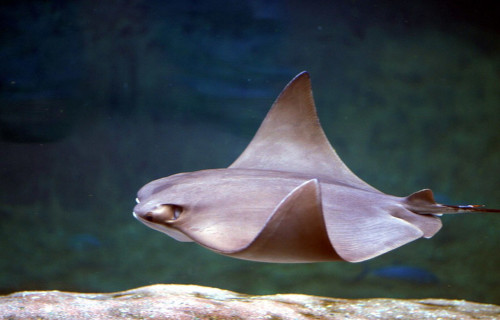
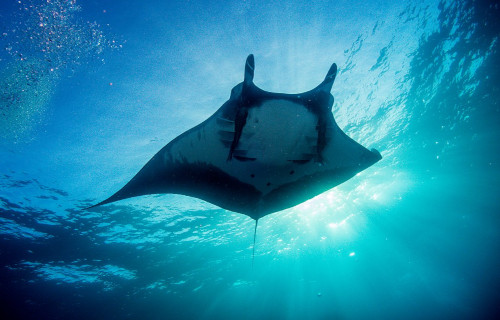
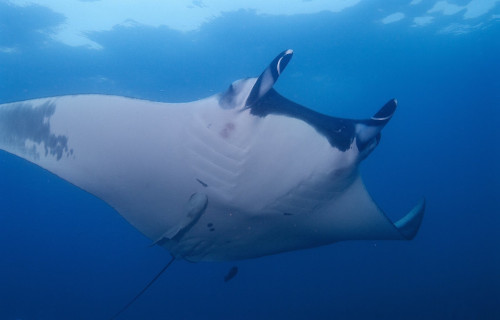
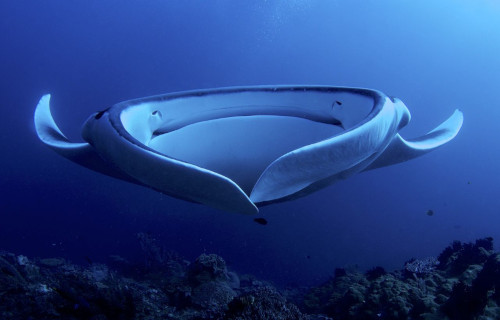
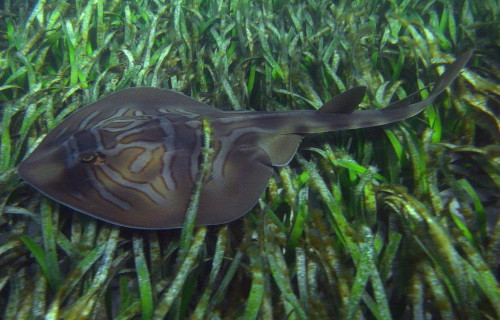
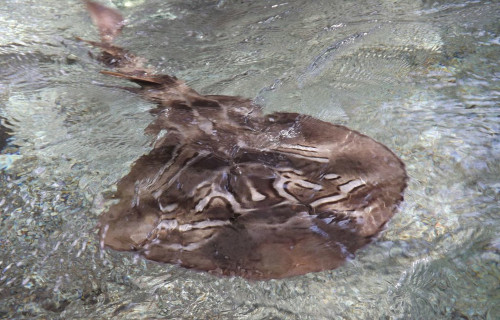
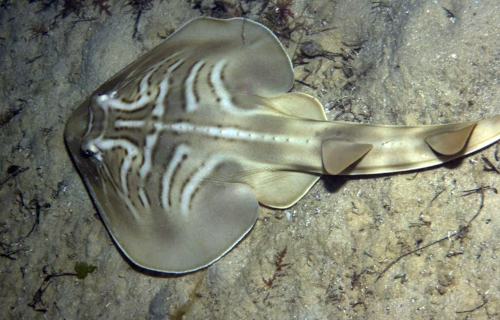

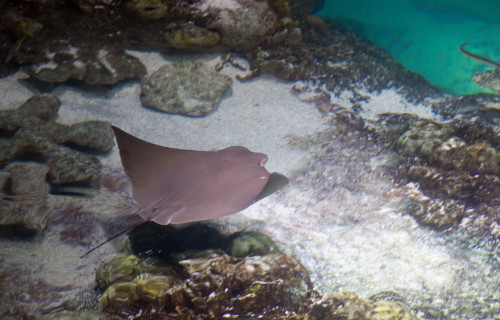
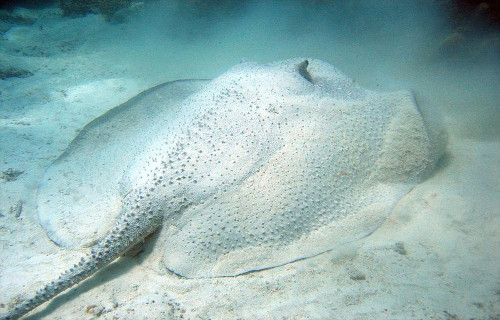
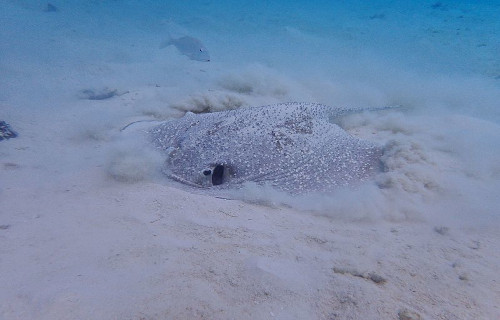
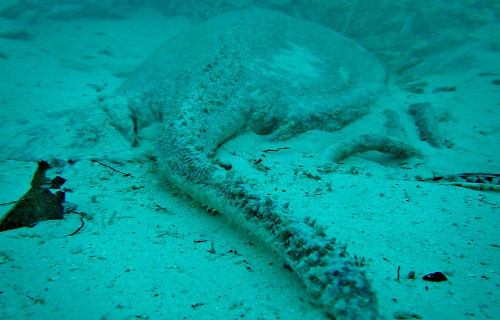
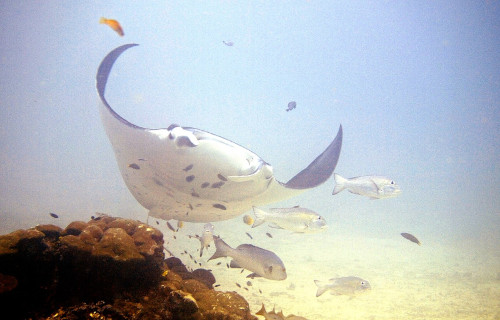
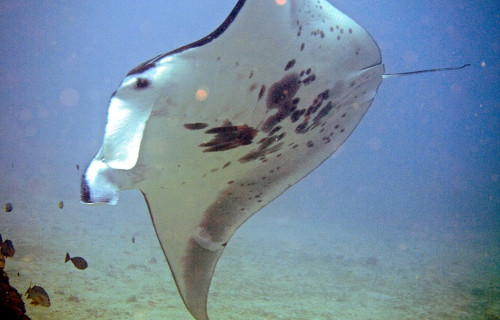
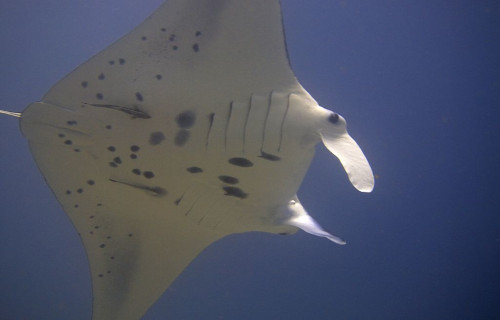









Leave a Reply